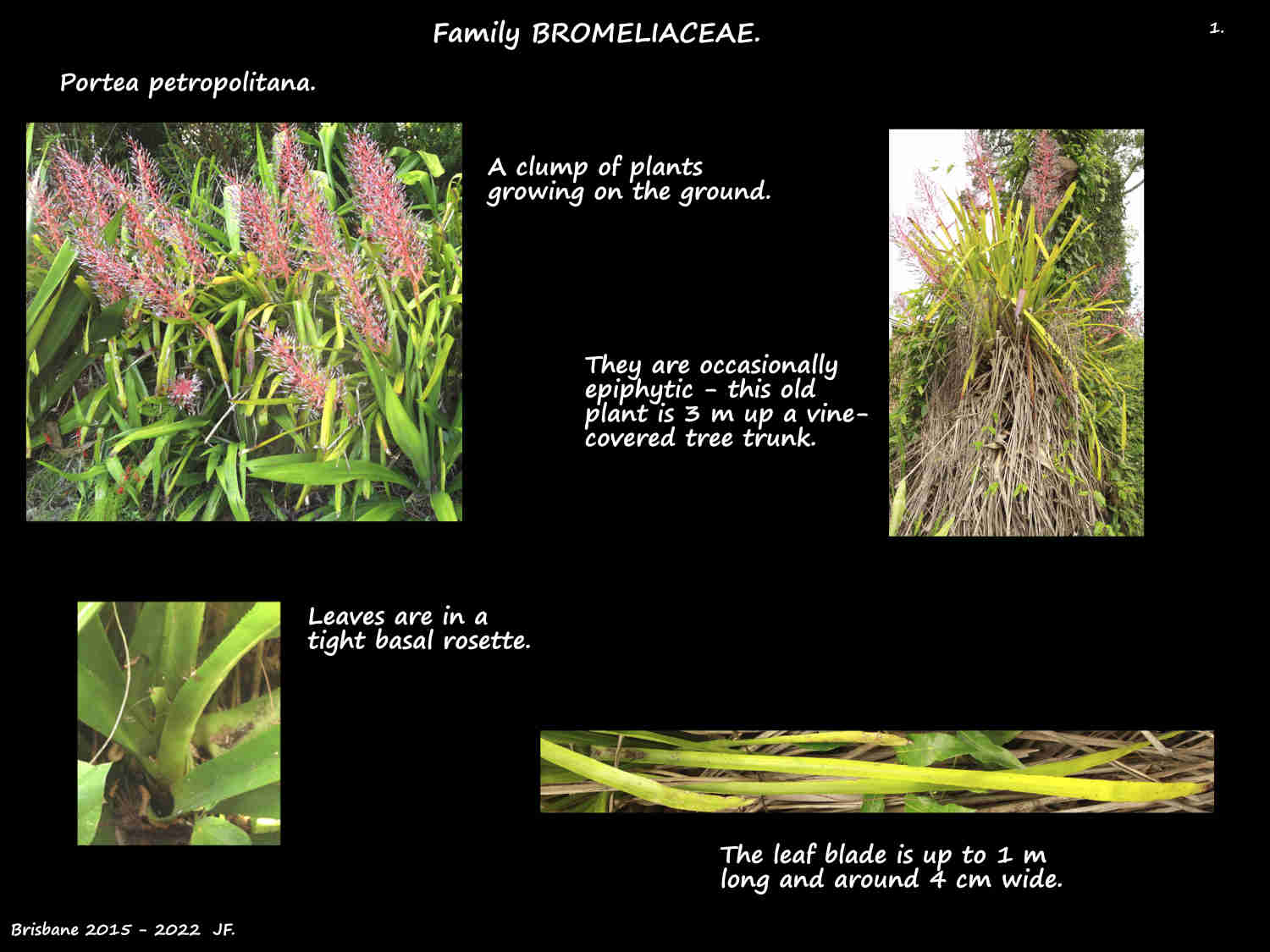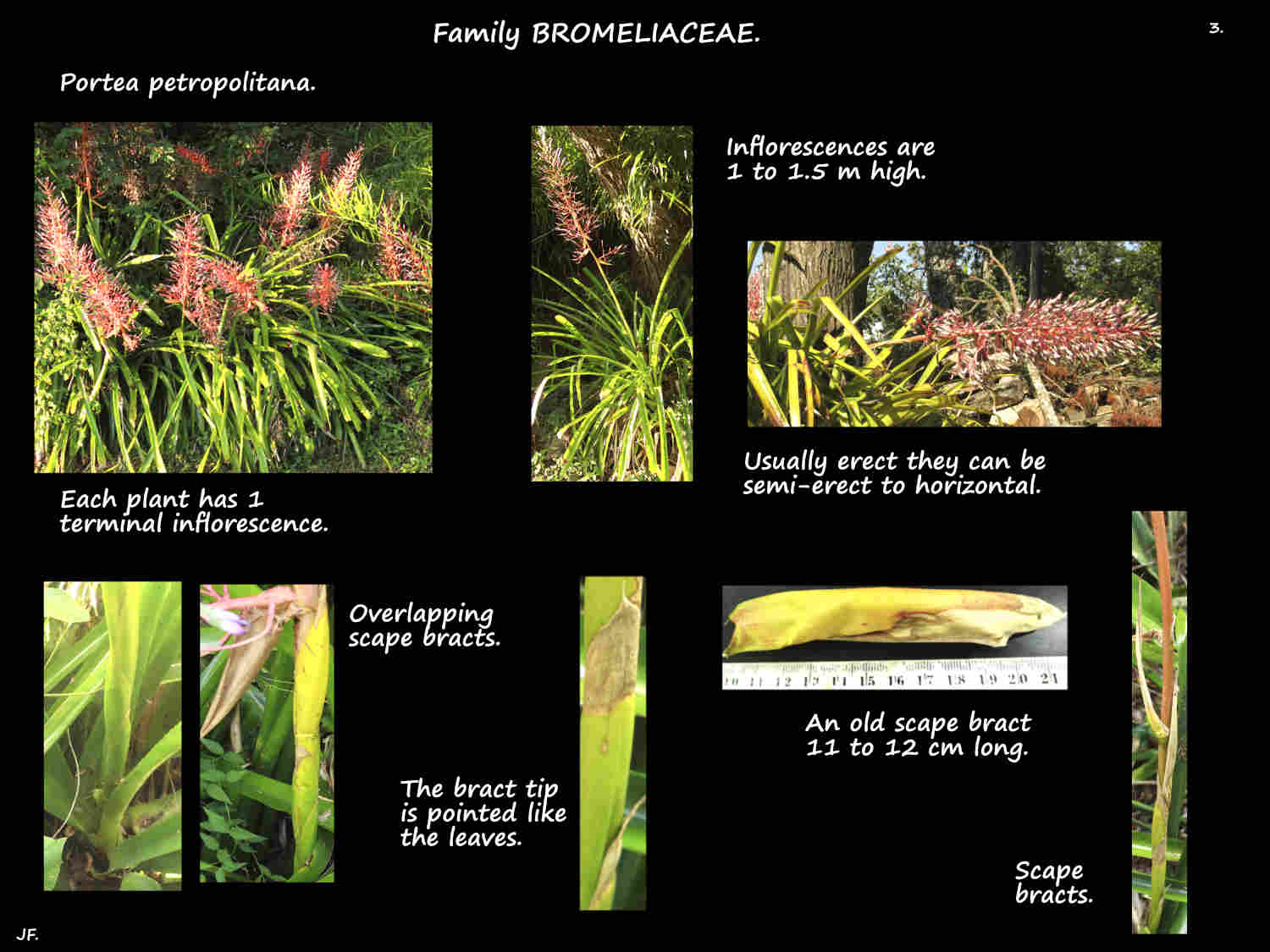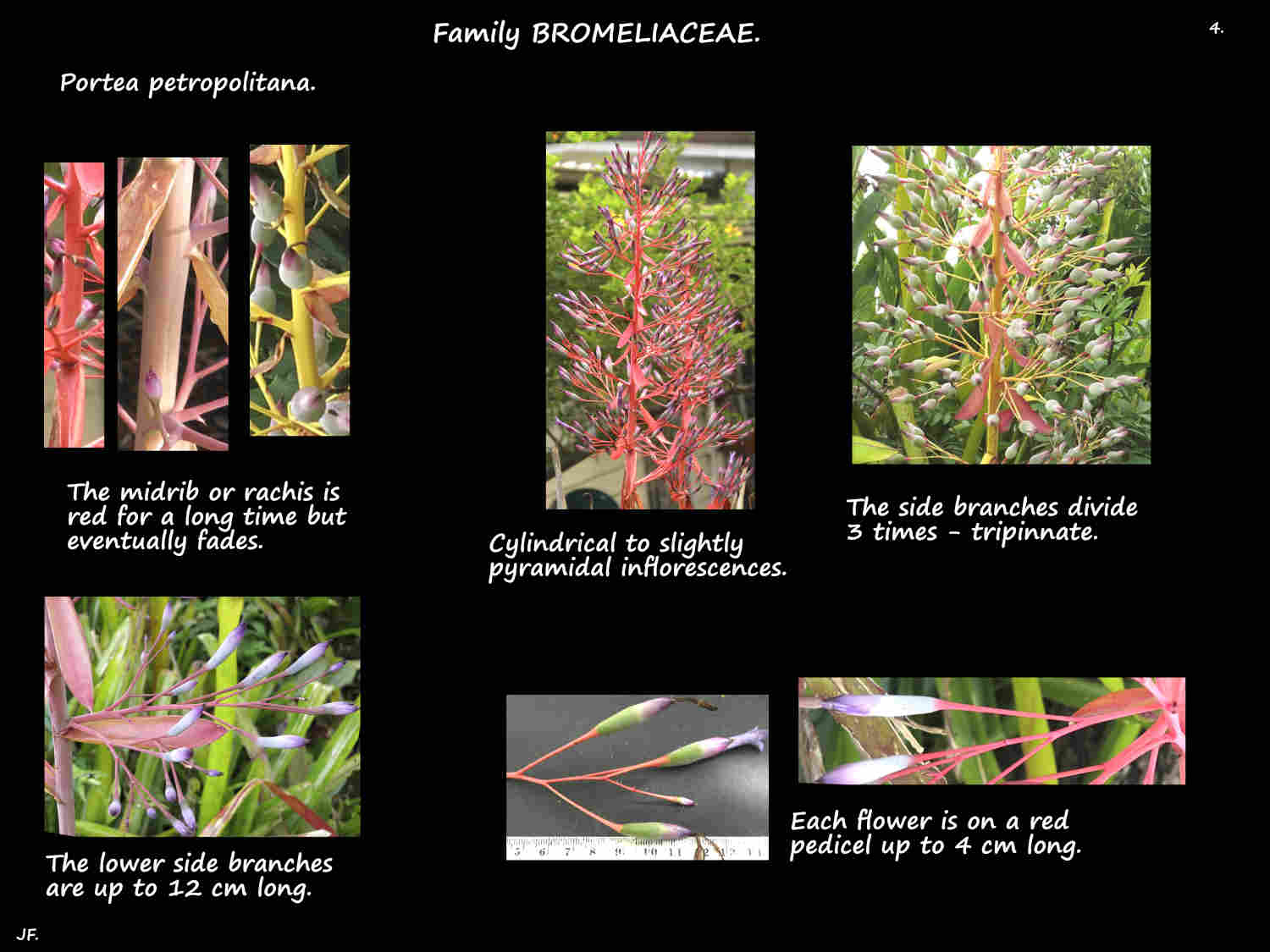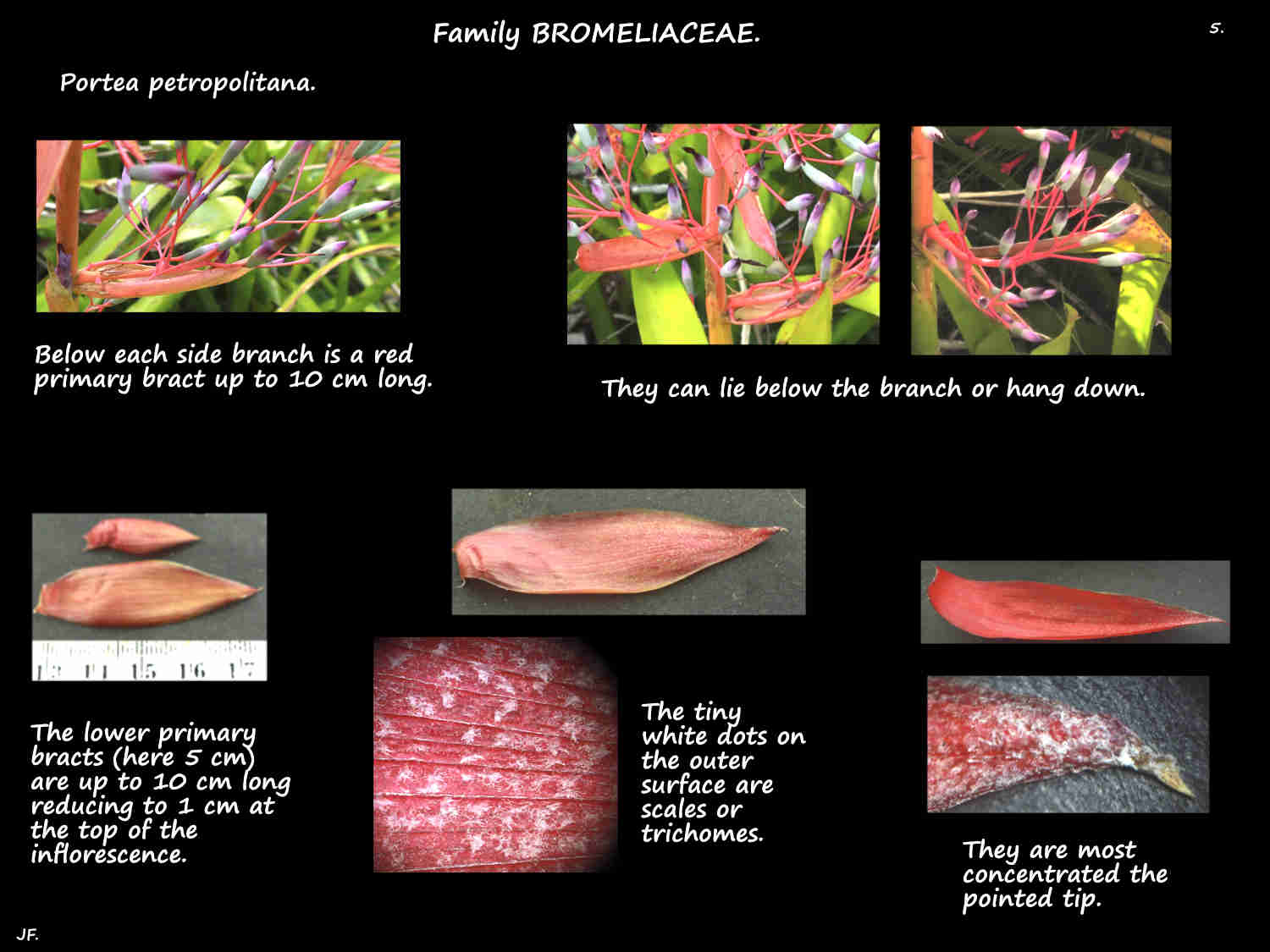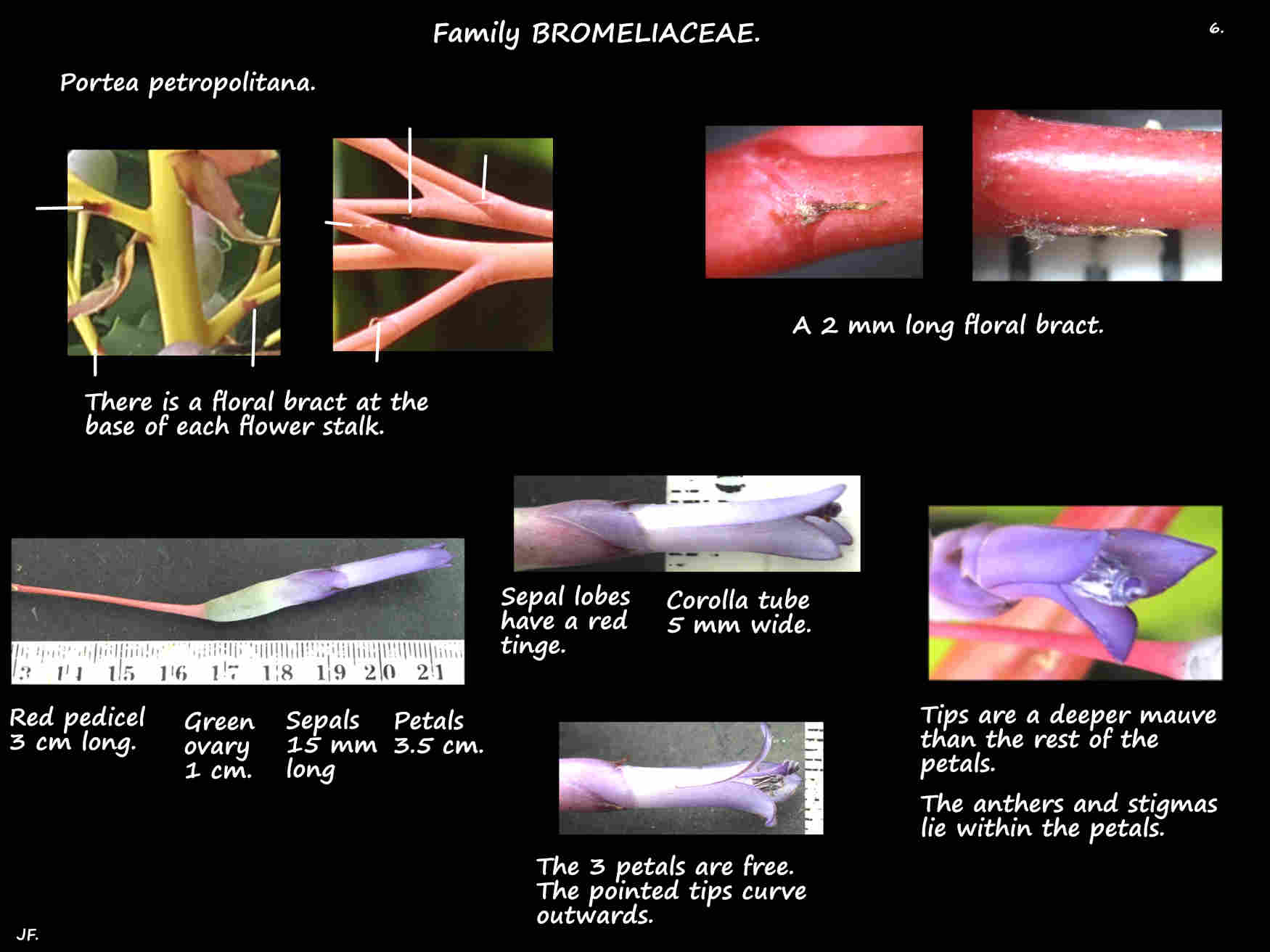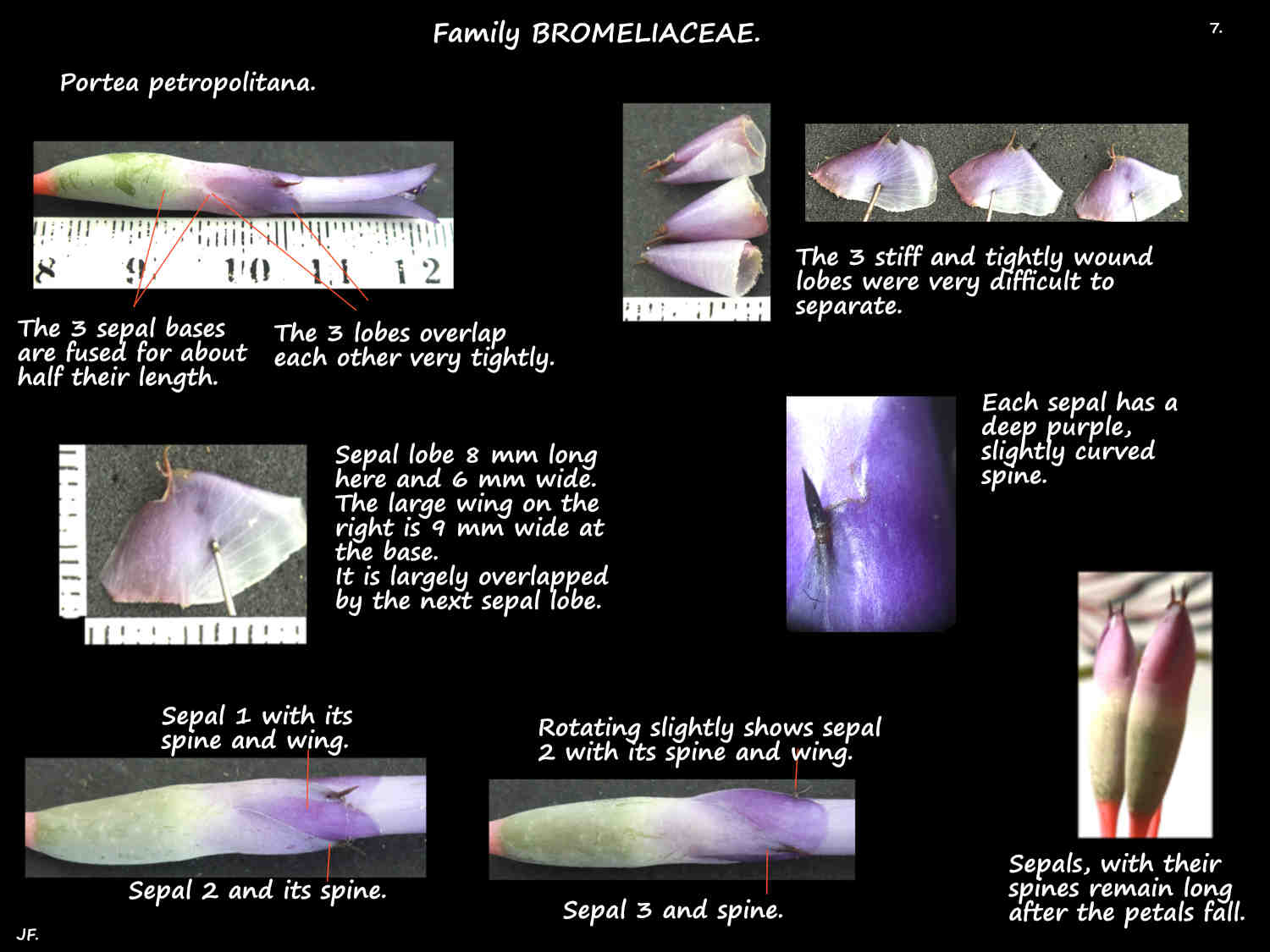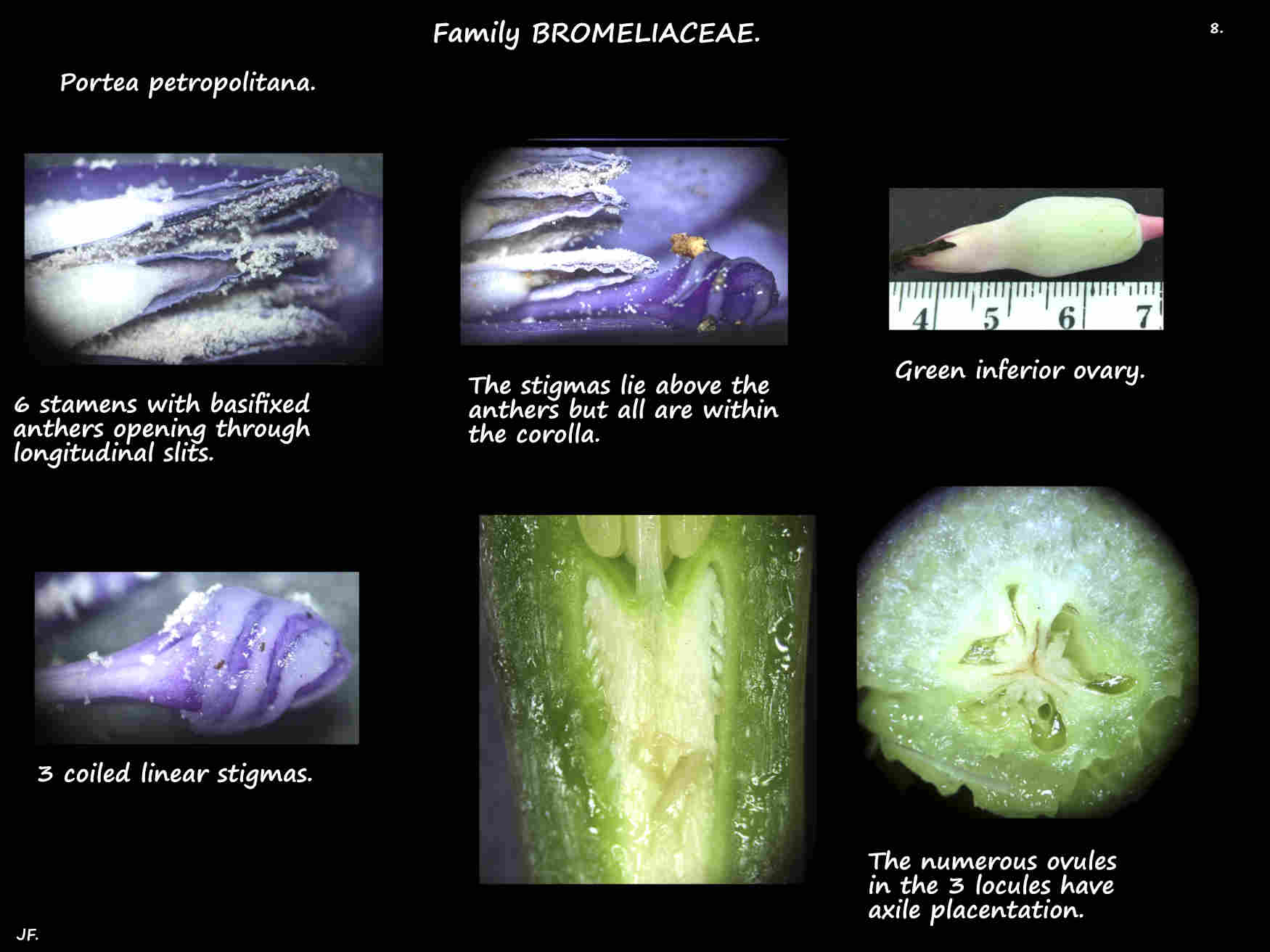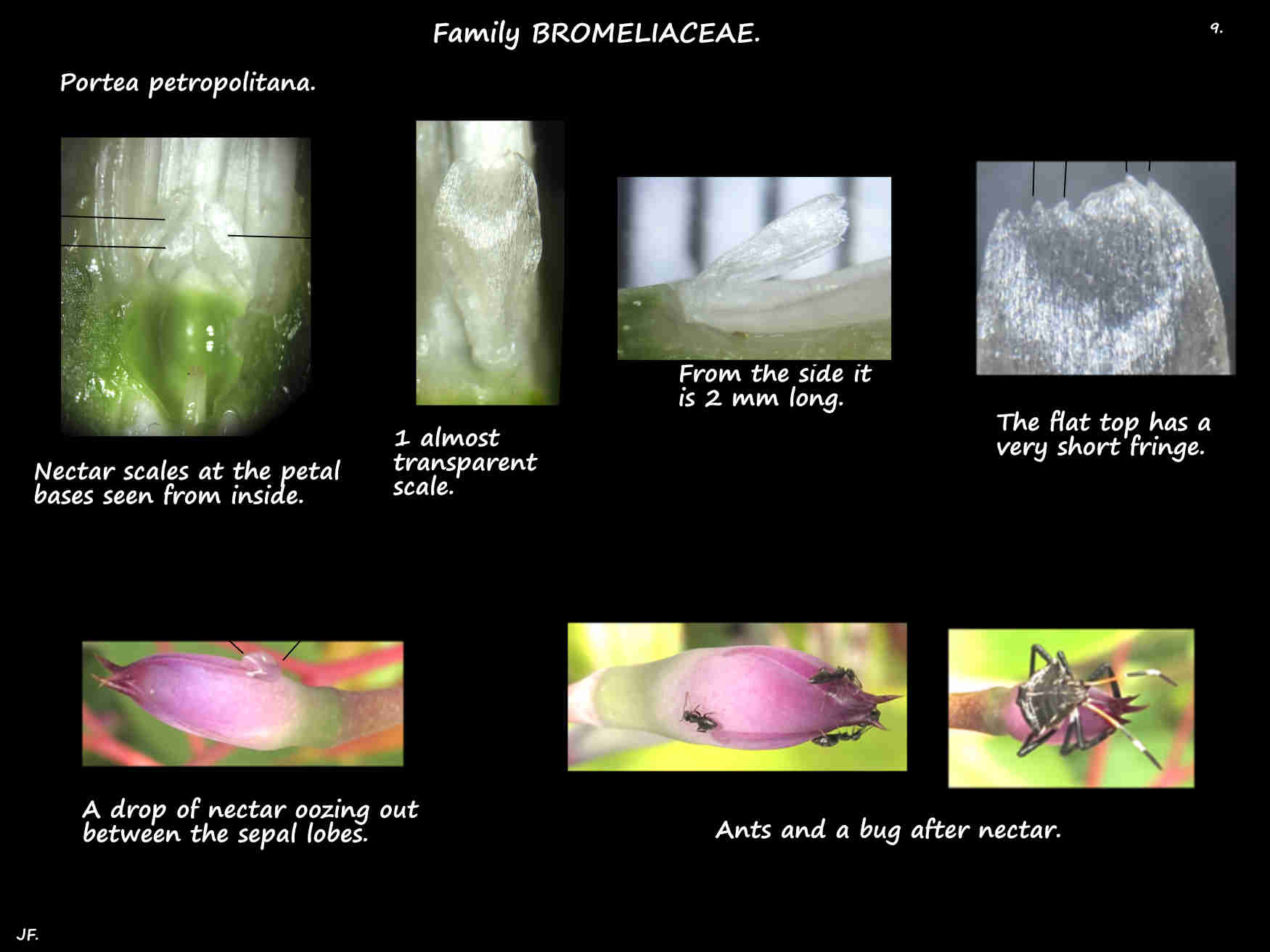Portea petropolitana.
P. petropolitana plants are typically terrestrial but occasionally epiphytic.
They have many leaves forming a large basal rosette.
The narrow linear leaves have a long wide basal sheath with tiny dark scales.
The leaf bases are so tight around the stem they can hold water.
The green blades, up to 1 m long are 10 cm wide at the base then around 4 cm up to the tip which has a spine.
They have 4 to 6 mm long dark spines near the base and shorter ones on the rest of the edge.
They have a few pale scales or trichomes.
Along the inner surface of the sheath-blade junction is a narrow flap of tissue called a ligule.
The loose roughly cylindrical terminal inflorescences, on a leafless stalk or scape can be around 1.5 m high.
The scape and the inflorescence axis or rachis are a pale red.
The overlapping elliptic scape bracts, around 10 cm long usually have a toothed edge.
The rachis or midrib has pale red side branches that branch twice more – tripinnate.
At the base of each primary side branch is a lanceolate bract.
Those under the lower branches are around 8 to 10 cm long with the more distal ones becoming progressively shorter.
They lie under the branch or hang down.
Flowers on the side branches are on a stalk or pedicel up to around 4 cm long.
The floral bract at the base of each pedicel is only a few mms long.
Flowers have 3 sepals and 3 petals.
The overlapping mauve sepals, around 15 mm long are fused for about half their length.
The lobes are very asymmetric with a wide, round-topped wing on one side.
There is also a stout spine a few mms long near the tip of the sepal.
The narrow mauve to blue petals, up to 3 or 3.5 cm long are free.
They have a narrow linear base with a slightly wider pointed lobe.
The 2 nectar scales at the base of each petal have a short fringe on the flattened end.
The petals die after a few days but the rest of the inflorescence can last for a long time.
The 6 stamens have dark purple basifixed anthers that lie within the corolla.
The inferior ovary, around 1 cm long has 3 locules.
The numerous ovules have axile placentation.
The single style has 3 linear stigma lobes that are twisted together in a spiral.
The fruit are purple berries.
Each plant only flowers once then dies but new plants grow from the basal offsets or pups.
Two of the 3 varieties are cultivated and there are a lot of cultivars.
J.F.

